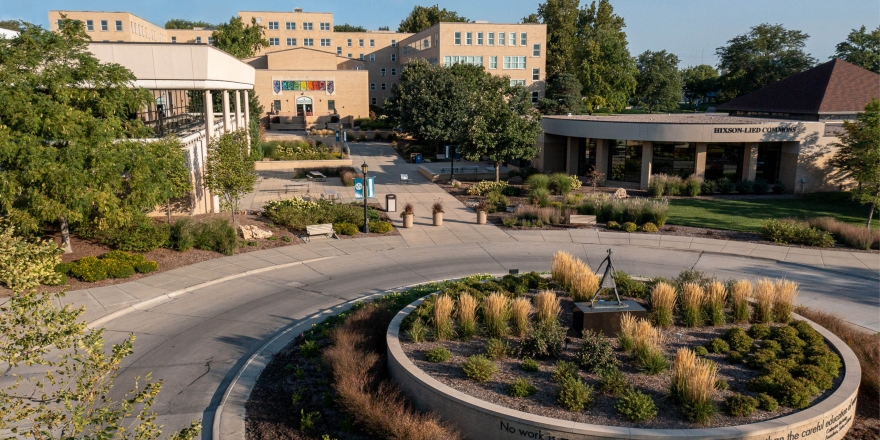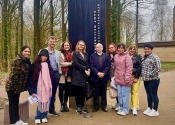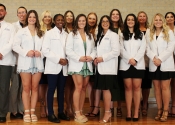
College of Saint Mary to Receive Anne Frank Sapling
OMAHA, Neb. – College of Saint Mary is pleased to announce the University has been chosen as one of six new recipients of saplings grown from Anne Frank’s horse chestnut tree that towered behind the Secret Annex in Amsterdam. CSM was chosen by the Anne Frank Center USA, an organization honoring the legacy of Anne Frank.
“We are deeply honored to have been chosen as a recipient of a sapling grown from Anne Frank’s cherished chestnut tree,” CSM President Heather Smith said. “It is a privilege to be entrusted with this living memorial, and we eagerly anticipate its profound impact as a symbol of resilience, hope and remembrance.”
With each sapling planted, the center shares Anne Frank’s love of nature with organizations across its coalition that are committed to honoring Anne Frank’s memory through education, free expression and belief in humanity.
Mark Gudgel, assistant professor of education, spearheaded CSM’s effort to be considered a site for one of the saplings. He said it is fitting that an institution dedicated to the education of young women should be the home of this tribute to the Holocaust.
“The mission of our university is deeply rooted in the values of the Sisters of Mercy and both align brilliantly with Anne Frank’s legacy and the incredible work that she has inspired throughout the world,” said Gudgel, who teaches a course on the Holocaust in film and literature. “College of Saint Mary is deeply honored; we are dedicated to being excellent stewards of the tree as it grows, eager to receive visitors, and committed to furthering the legacy of Anne Frank by continuing to provide young women with an education that will help them to become leaders in this world.”
CSM will host a planting ceremony on April 26, Arbor Day. Details of the event will be released later.
Other locations receiving a sapling are Anne Frank LA, Los Angeles, CA; Community Day School, Pittsburgh, PA; Gratz College, Melrose Park, PA; Holocaust & Human Rights Education Center, White Plains, NY; and Raritan Valley Community College, Branchburg, NJ.
From her only window to the outside world, Anne Frank could see the sky, birds, and a majestic chestnut tree. “As long as this exists,” she wrote in her diary, “how can I be sad?”
Anne Frank wrote about her beloved chestnut tree in three separate diary entries in 1944, marking the changing of the seasons as she and others hid from the Nazis.
February 23, 1944
“The two of us looked out at the blue sky, the bare chestnut tree glistening with dew, the seagulls and other birds glinting with silver as they swooped through the air, and we were so moved and entranced that we couldn’t speak.”
April 18, 1944
“April is glorious, not too hot and not too cold, with occasional light showers. Our chestnut tree is in leaf, and here and there you can already see a few small blossoms.”
May 13, 1944
“Our chestnut tree is in full bloom. It’s covered with leaves and is even more beautiful than last year.”
In a 1968 speech, Anne Frank’s father, Otto Frank, reflected the impact of the chestnut tree on his youngest daughter. “How could I have known,” he asked, “how much it meant to Anne to see a patch of blue sky, to observe the seagulls as they flew, and how important the chestnut tree was for her when I think that she never showed any interest in nature.” “Still,” he acknowledged, “she longed for it when she felt like a bird in a cage.”
The Sapling Project began in 2009 with the Anne Frank House in Amsterdam’s efforts to preserve the original chestnut tree by gathering and germinating chestnuts and donating the saplings to organizations dedicated to Anne Frank’s memory.
Despite efforts to strengthen the original chestnut tree, the aged, diseased tree toppled in a windstorm in 2010. It was one of the oldest chestnut trees in Amsterdam.
Over the last 10 years, Anne Frank Center USA has awarded saplings to sites across the United States, including the U.S. Capitol, the United Nations Headquarters, and others. Taken together, these trees form a living memorial with branches reaching from coast to coast.
About Anne Frank Center USA
The Anne Frank Center USA traces its roots to the efforts of Otto Frank in the 1950s to raise funds to support the restoration of Anne Frank House in Amsterdam. He established the Anne Frank Foundation in New York as a fundraising organization dedicated to this purpose. The Anne Frank Foundation evolved into the Anne Frank Center USA, securing official 501(c)(3) nonprofit status in New York in 1977. AFC USA, which is still based in New York, functions as a decentralized organization. This makes it possible for the organization to remain nimble and responsive in a rapidly changing world. Over the past year, programs of AFC USA have reached hundreds of thousands of students in twenty-two states and the District of Columbia.
About Anne Frank
Born on June 12, 1929, Anne Frank was a Jewish teenager from Frankfurt, Germany, who was forced to go into hiding during the Holocaust. She and her family, along with four others, spent over two years during World War II hiding in an annex of rooms on Prinsengracht in Amsterdam, today known as the Anne Frank House. After being betrayed by the Nazis, Anne, her family, and the others living with them were arrested and deported to Nazi concentration camps. In March of 1945, seven months after she was arrested, Anne Frank died of typhus at the Bergen-Belsen concentration camp. She was 15 years old.
About The Diary of a Young Girl
Since it was first published in 1947, Anne Frank's diary has become one of the most powerful memoirs of the Holocaust. Its message of courage and hope in the face of adversity has reached millions. The diary has been translated into more than 70 languages with over 30 million copies sold. Anne Frank's story is especially meaningful to young people today. For many she is their first, if not their only exposure to the history of the Holocaust.











